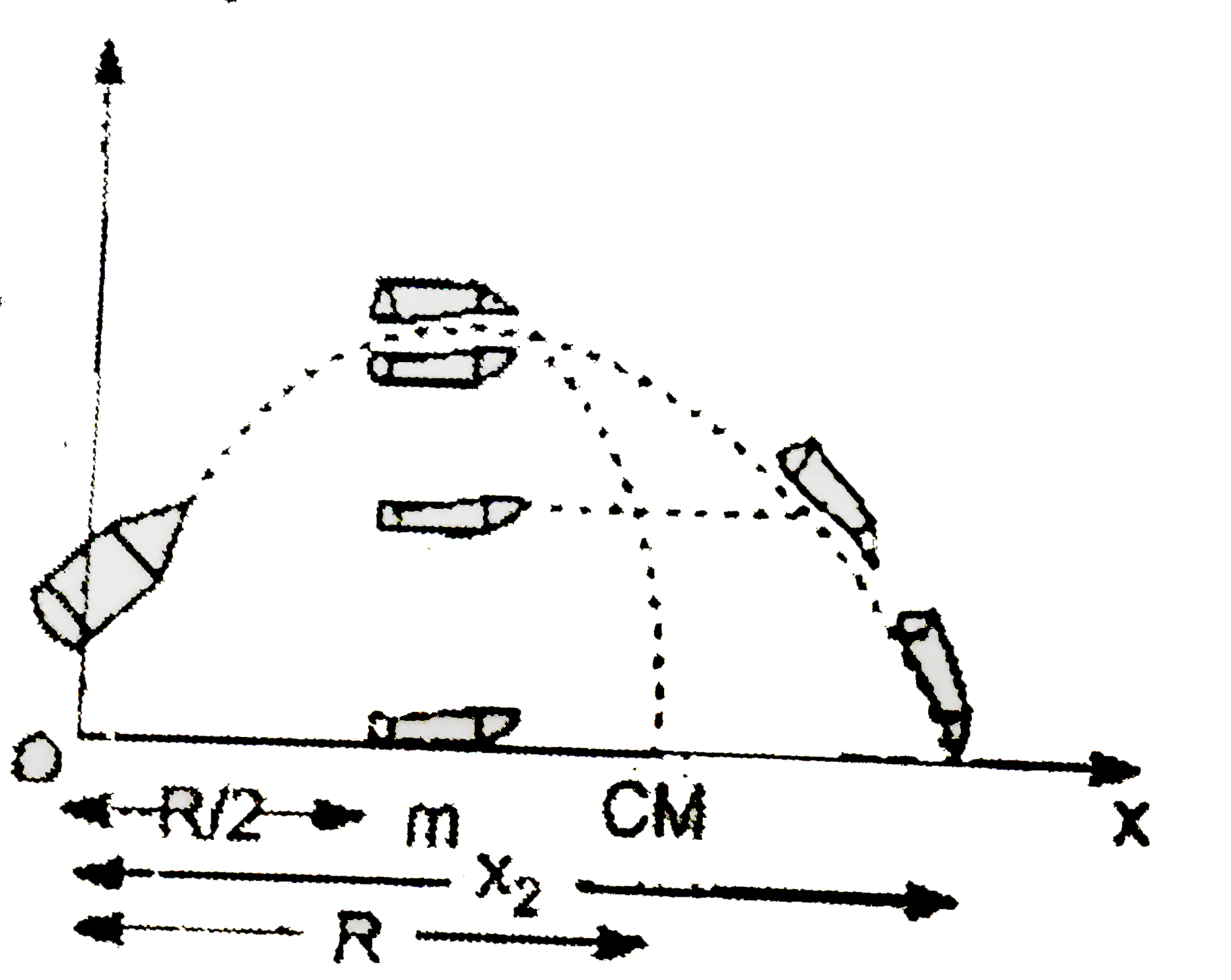A guided missile is fired to strike an object at the same level 38 km away. It may be assumed that it rises vertically 1.5 km and then for the remainder of the flight it follows a parabolic path at an elevation of 45∘ . Calculate its velocity at the begining of its parabolic path.
The correct Answer is:[2177 km/h]
Topper's Solved these Questions
- KINEMATICSBOOK - PHYSICS GALAXY - ASHISH ARORACHAPTER - KINEMATICSEXERCISE - Advance MCQs with One or More Options Correct
17 Videos
- GRAVITATIONBOOK - PHYSICS GALAXY - ASHISH ARORACHAPTER - GRAVITATIONEXERCISE - Unsolved Numerical
94 Videos
- LINEAR MOMENTUM & ITS CONSERVATIONBOOK - PHYSICS GALAXY - ASHISH ARORACHAPTER - LINEAR MOMENTUM & ITS CONSERVATIONEXERCISE - exercise 1.3
3 Videos
Similar Questions
Prithvi missile is fired to destroy an enemy military base situated on same horizontal level, situated 99 km away. The missile rises vertically for 1 km & then for remainder of flight, it followes parbolic path like a free body under earth's gravity, at an angle of 45∘. Calculate its velocity at beginning of parabolic path. (g=10ms−2)
View SolutionPrithvi missile is fired to destroy an enemy military base situated on same horizontal level, situated 99 km away. The missile rises vertically for 1 km & then for remainder of flight, it followes parbolic path like a free body under earth's gravity, at an angle of 45∘. Calculate its velocity at beginning of parabolic path. (g=10ms−2)
View Solution
Knowledge Check
A cracker is thrown into air with a velocity of 10m/s at an angle of 45∘ with the vertical. When it is at a height of 0.5m from the ground, it explodes into a number of pieces which follow different parabolic paths. What is the velocity of centre of mass, when it is at a height of 1m from the ground? (g=10m/s2)
A4√5m/sB2√5m/sC5√4m/sD10m/s
Two particles were projected one by one with the same initial velocity from the same point on level ground. They follow the same parabolic trajectory and are found to be in the same horizontal level, separated by a distance of 1m,2s after the second partice was projected. Assume that the horizontal component of their velocities is 0.5ms−1. Find
(a) the horizontal range of the parabolic path.
(b) the maximum height for the parabolic path.
View SolutionTwo particles were projected one by one with the same initial velocity from the same point on level ground. They follow the same parabolic trajectory and are found to be in the same horizontal level, separated by a distance of 1m,2s after the second partice was projected. Assume that the horizontal component of their velocities is 0.5ms−1. Find
(a) the horizontal range of the parabolic path.
(b) the maximum height for the parabolic path.
View SolutionA projectile of mass mis fired with an initial velocity v0 at an angle 0 to the horizontal. At its highest point, it explodes into two fragments of equal mass. One of the fragments falls vertically with zero initial speed. Since the only external force acting on the system is gravitational, the motion of centre of mass of the_ system (the fragments) follows the same parabolic path as the projectile would have followed if there had been no explosion. Force of explosion is internal, it cannot change the trajectory of the system.

View SolutionA cracker is thrown into air with a velocity of 10m/s at an angle of 45∘ with the vertical. When it is at a height of 0.5m from the ground, it explodes into a number of pieces which follow different parabolic paths. What is the velocity of centre of mass, when it is at a height of 1m from the ground? (g=10m/s2)
View SolutionIn the given figure, a rocket is fired vertically upwards from its launching pad P. It first rises 40 km vertically upwards and then 40 km at 60° to the vertical. PA represents the first stage of the journey and AB the second. C is a point vertically below B on the horizontal level as P, calculate :

(i) the height of the rocket when it is at point B.
View SolutionA 14.5 kg mass, fastened to the end of a steel wire of unstretched length 1m, is whirled in a vertical circle with an angular velocity of 2rev./s at the bottom of the circle. The cross-sectional area of the wire is 0.065cm2 . Calculate the elongation of the wire when the mass is at the lowest point of its path Ysteel=2×1011Nm−2.
View SolutionA 14.5 kg mass, fastened to the end of a steel wire of unstretched length 1m, is whirled in a vertical circle with an angular velocity of 2rev./s at the bottom of the circle. The cross-sectional area of the wire is 0.065cm2 . Calculate the elongaton of the wire when the mass is at the lowest point of its path Ysteel=2×1011Nm−2.
View Solution
